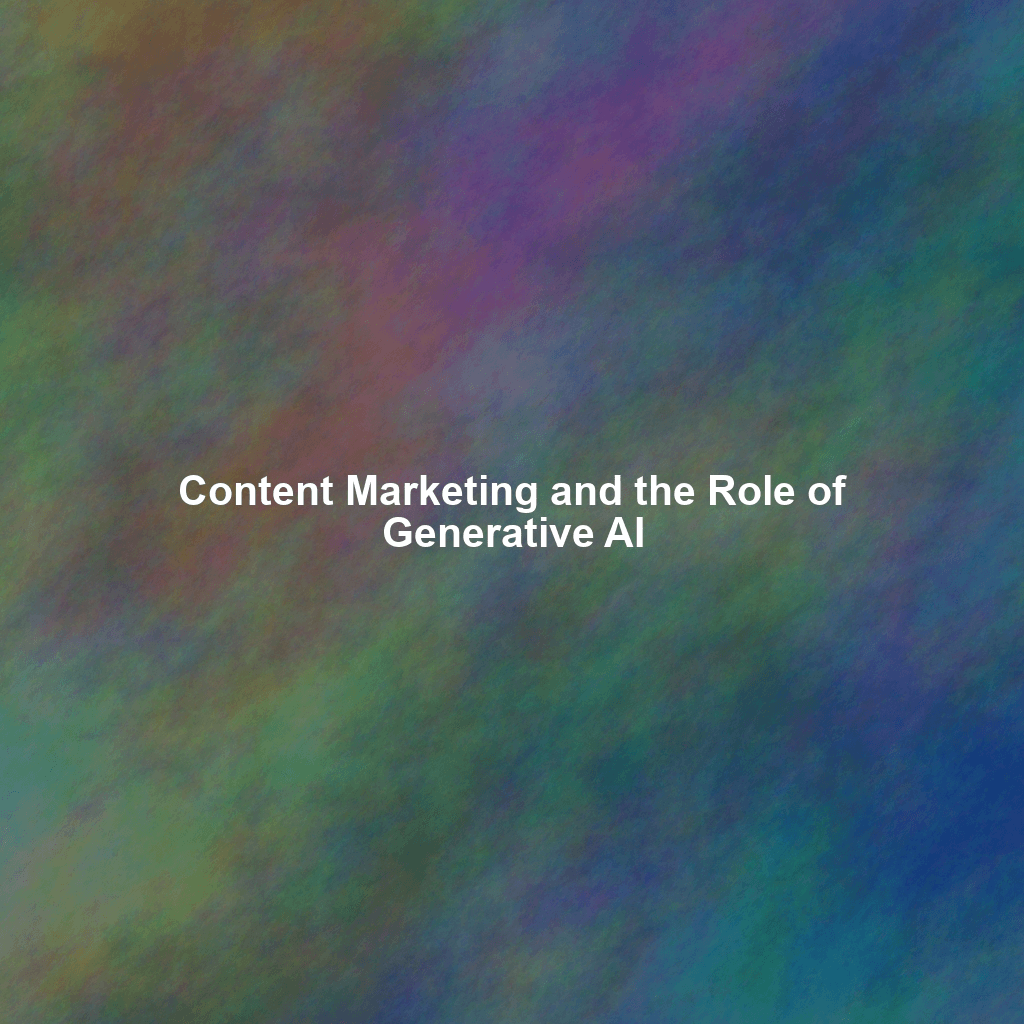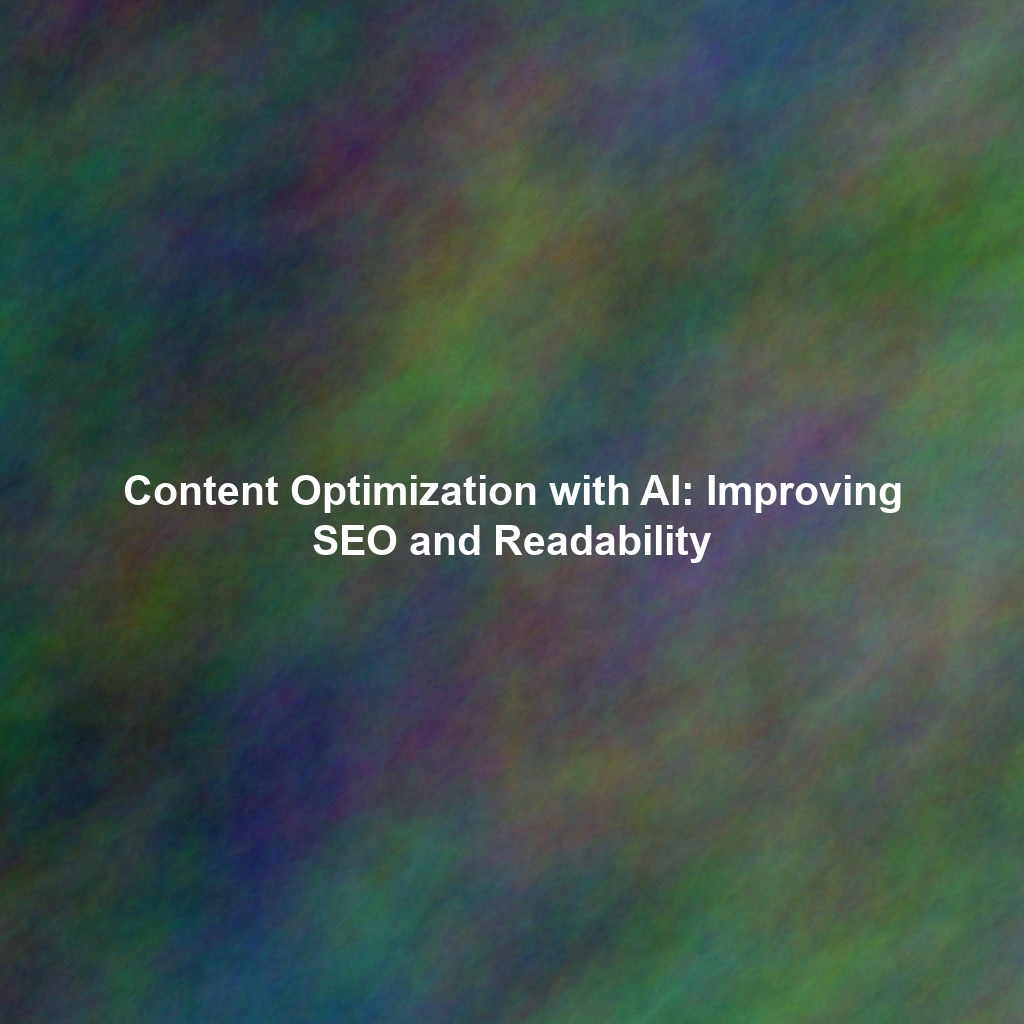The Content Marketing Revolution: A Need for Speed and Scale
Traditional content creation methods, reliant on human writers and designers, are struggling to meet this demand. The process can be time-consuming, expensive, and often requires specialized skills that are in short supply. This is where generative AI enters the picture, offering a potentially game-changing solution to the content marketing dilemma.
Generative AI: What Is It, and How Does It Work?
Generative AI refers to a category of artificial intelligence models capable of producing new content, ranging from text and images to audio and video. Unlike traditional AI, which primarily focuses on analysis and prediction, generative AI can create original outputs based on the data it has been trained on.
The core of generative AI lies in its ability to learn complex patterns and relationships within vast datasets. Models like large language models (LLMs) are trained on massive amounts of text, enabling them to understand and generate human-like language. Similarly, image generation models are trained on vast libraries of images, allowing them to create realistic or artistic visuals.
The process typically involves providing the AI model with a prompt or set of instructions, which serves as a starting point for the generation process. The model then uses its learned knowledge to generate content that aligns with the prompt, often iteratively refining its output until it meets the desired specifications. The sophistication of these models has increased exponentially in recent years, making them increasingly capable of producing high-quality and relevant content.
The Impact of Generative AI on Content Marketing: A Multi-Faceted Transformation
Generative AI is transforming content marketing across a wide range of areas, impacting everything from content creation to strategy development and optimization. Here are some of the key ways AI is making its mark:
1. Content Creation at Scale:
Generative AI empowers marketers to produce vast quantities of content in a fraction of the time it would take using traditional methods. AI tools can generate blog posts, articles, social media updates, website copy, email newsletters, and even scripts for videos and podcasts. This capability is particularly valuable for businesses that need to maintain a consistent and active online presence.
2. Content Personalization:
AI can analyze vast amounts of customer data to identify individual preferences, behaviors, and needs. This information can then be used to generate personalized content that resonates with specific audience segments. From tailored product recommendations to personalized email marketing campaigns, AI enables marketers to deliver highly relevant and engaging experiences.
3. Idea Generation and Brainstorming:
Struggling to come up with fresh content ideas? Generative AI can assist with brainstorming by providing suggestions based on trending topics, keyword analysis, and audience interests. AI tools can analyze industry data and identify gaps in the market, helping marketers to uncover new content opportunities.
4. SEO Optimization:
AI can analyze search engine results pages (SERPs) and identify the keywords and topics that are most relevant to a specific target audience. This information can then be used to optimize content for search engines, improving visibility and driving organic traffic. AI can also assist with tasks such as keyword research, meta description generation, and content gap analysis.
5. Copywriting and Editing:
Generative AI can assist with copywriting tasks by generating compelling headlines, ad copy, and website descriptions. AI tools can also help to improve the grammar, style, and clarity of existing content, ensuring that it is polished and professional.
6. Content Repurposing:
AI can repurpose existing content into different formats, such as turning a blog post into a video script or an infographic. This allows marketers to maximize the value of their content and reach a wider audience.
Real-World Examples: Generative AI in Action
The applications of generative AI in content marketing are becoming increasingly diverse and sophisticated. Here are a few real-world examples of how businesses are leveraging AI to enhance their content efforts:
- E-commerce: Using AI to generate product descriptions, personalize product recommendations, and create targeted advertising campaigns.
- News Media: Employing AI to generate news articles, write summaries of long-form content, and create personalized news feeds.
- Education: Utilizing AI to create educational content, personalize learning experiences, and provide automated feedback to students.
- Healthcare: Developing AI-powered chatbots to answer patient questions, provide health information, and schedule appointments.
- Travel and Hospitality: Using AI to generate travel guides, personalize hotel recommendations, and create targeted marketing campaigns.
The Human Element: AI as a Tool, Not a Replacement
While generative AI offers tremendous potential, it’s crucial to recognize that it is not a replacement for human creativity and expertise. AI should be viewed as a powerful tool that can augment human capabilities, not replace them entirely. The best content marketing strategies leverage the strengths of both AI and human marketers.
Humans excel at tasks such as:
- Strategic Thinking: Developing overall content marketing strategies and aligning them with business objectives.
- Creative Inspiration: Generating original ideas, developing compelling narratives, and crafting emotionally resonant content.
- Critical Thinking: Evaluating the quality and accuracy of AI-generated content, ensuring that it aligns with brand values and ethical standards.
- Emotional Intelligence: Understanding audience needs and motivations, crafting content that connects with them on a personal level.
- Contextual Awareness: Providing context and nuance to AI-generated content, ensuring that it is relevant and appropriate for the intended audience.
The ideal scenario involves humans and AI working together, with AI handling repetitive and time-consuming tasks, while humans focus on strategy, creativity, and quality control. This collaborative approach allows businesses to maximize the efficiency and effectiveness of their content marketing efforts.
Challenges and Considerations: Navigating the AI Landscape
While the potential benefits of generative AI are significant, there are also several challenges and considerations that marketers need to be aware of:
- Accuracy and Quality: AI-generated content is not always perfect. It can sometimes contain inaccuracies, inconsistencies, or even factual errors. It’s crucial to carefully review and edit all AI-generated content to ensure its accuracy and quality.
- Originality and Plagiarism: AI models are trained on vast datasets, which means that there is a risk of generating content that is similar to existing content. Marketers need to be vigilant about checking AI-generated content for plagiarism and ensuring that it is original.
- Bias and Ethical Concerns: AI models can be biased based on the data they have been trained on. This bias can manifest in the form of stereotypes, offensive language, or discriminatory content. Marketers need to be aware of these potential biases and take steps to mitigate them.
- Transparency and Disclosure: It’s important to be transparent with audiences about the use of AI in content creation. Some audiences may prefer to know whether content was generated by AI, while others may not care. Marketers should consider disclosing the use of AI when it is relevant and appropriate.
- Skill Gap: Effectively leveraging generative AI requires a new set of skills. Marketers need to learn how to use AI tools, interpret AI-generated content, and integrate AI into their existing workflows.
Getting Started with Generative AI: A Practical Guide
Ready to explore the potential of generative AI for your content marketing efforts? Here are a few practical steps to get you started:
- Identify Your Needs: Start by identifying the areas where AI can provide the most value. What content creation challenges are you currently facing? What tasks are most time-consuming?
- Research AI Tools: Explore the various generative AI tools that are available on the market. Consider factors such as price, features, ease of use, and integration capabilities.
- Experiment and Test: Start with a small-scale pilot project to experiment with different AI tools and techniques. Test the AI’s ability to generate different types of content and evaluate the results.
- Train Your Team: Provide your team with the training they need to effectively use AI tools and integrate them into their workflows.
- Monitor and Optimize: Continuously monitor the performance of AI-generated content and optimize your approach based on the results.
- Stay Informed: The field of generative AI is rapidly evolving. Stay informed about the latest developments and best practices.
The Future of Content Marketing: A Symbiotic Relationship
The future of content marketing will be shaped by a symbiotic relationship between humans and AI. AI will empower marketers to create more content, personalize experiences, and optimize their efforts, while humans will provide the strategic thinking, creative inspiration, and ethical oversight that are essential for success. By embracing AI as a powerful tool and focusing on the human element, content marketers can unlock new levels of efficiency, effectiveness, and engagement.
Conclusion: Embracing the AI-Powered Content Revolution
Generative AI is no longer a futuristic concept; it’s a present-day reality that is transforming the landscape of content marketing. By understanding the capabilities of AI, addressing its challenges, and embracing a collaborative approach, marketers can unlock new opportunities to create more engaging, personalized, and effective content. The AI-powered content revolution is here, and those who embrace it will be best positioned to succeed in the ever-evolving world of digital marketing.
 Skip to content
Skip to content

